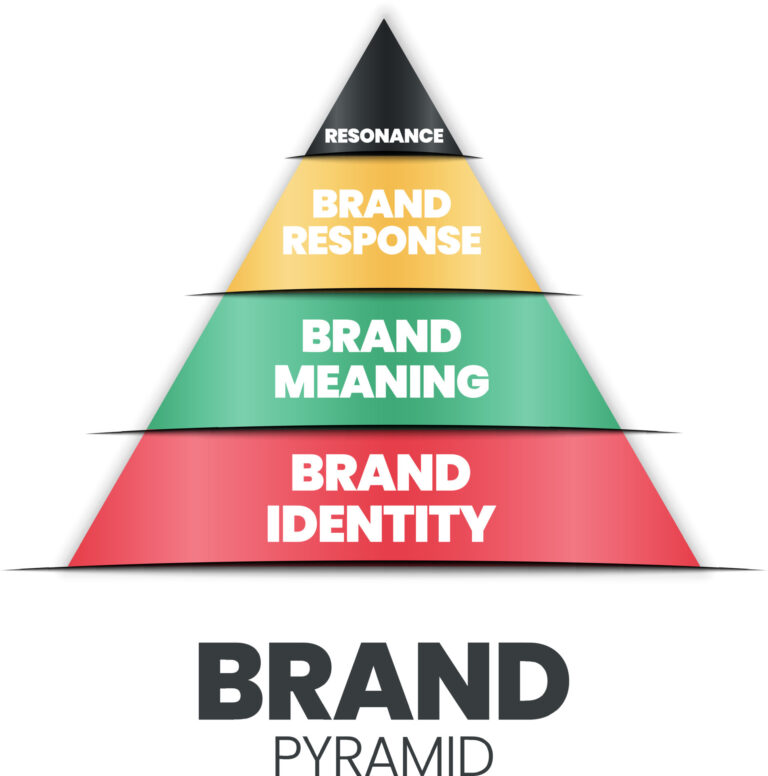Chinese Car Brand Logos: A Journey from Identity to Global Recognition
Chinese Car Brand Logos: A Journey from Identity to Global Recognition cars.truckstrend.com
In the dynamic and rapidly evolving automotive landscape, Chinese car brands have emerged as significant players, challenging established norms and pushing the boundaries of innovation, particularly in the electric vehicle (EV) sector. At the heart of their identity and global aspirations lie their brand logos. Far more than just decorative emblems, Chinese car brand logos are intricate symbols that encapsulate a company’s history, philosophy, technological prowess, and cultural heritage. They serve as the visual shorthand for a brand’s promise, a crucial element in forging connections with consumers worldwide, and a testament to China’s growing confidence in design and engineering. Understanding these logos provides a unique window into the strategic thinking and cultural nuances driving one of the world’s most exciting automotive transformations.
The Evolution of Chinese Car Brand Logos: From Formative Years to Distinctive Identity
Chinese Car Brand Logos: A Journey from Identity to Global Recognition
The journey of Chinese car brand logos mirrors the broader evolution of the nation’s automotive industry. In its formative years, the design of some Chinese car logos occasionally drew criticism for perceived similarities to established Western counterparts. This period was characterized by a focus on rapid production and market entry, with less emphasis on unique brand identity. However, as the industry matured, fueled by massive investments in research and development, the acquisition of international talent, and a growing domestic consumer base demanding sophistication, a profound shift occurred.
Today, Chinese car brands are meticulously crafting logos that are distinctive, modern, and imbued with meaning. This evolution reflects a conscious effort to shed old perceptions and cultivate a global presence built on originality and quality. The transition from utilitarian emblems to sophisticated brand identifiers underscores a newfound confidence and a strategic pivot towards brand equity and design excellence. This change is not merely aesthetic; it signifies a deeper commitment to innovation, global competitiveness, and the development of unique brand narratives that resonate with diverse audiences.
Common Design Elements and Symbolism in Chinese Car Logos
Chinese car logos, while increasingly diverse, often incorporate recurring design elements and symbolic meanings that reflect cultural values, brand aspirations, and technological focus.
- Geometric Shapes: Many modern Chinese car logos favor clean, geometric forms such as shields, circles, and abstract polygons. These shapes convey stability, precision, modernity, and a sense of enclosure or protection, often appealing to a global audience with their universal simplicity.
- Abstract and Minimalist Designs: There’s a strong trend towards minimalism and abstraction, particularly among new energy vehicle (NEV) brands. These designs often feature clean lines, negative space, and simplified forms, signaling futurism, technological advancement, and environmental consciousness. This approach aims for timelessness and international appeal.
- Colors: Color palettes are often strategically chosen:
- Red: A highly auspicious color in Chinese culture, symbolizing prosperity, passion, good fortune, and revolution. Brands like Hongqi historically feature red prominently.
- Gold/Silver/Grey: Often used to denote luxury, prestige, sophistication, and advanced technology. Metallic finishes are common for premium brands.
- Blue: Increasingly popular among EV brands, symbolizing technology, sustainability, the future, and environmental responsibility.
- Integration of Characters or Calligraphy (Subtle): While less overt than in the past, some logos subtly integrate elements inspired by Chinese characters or calligraphic strokes, connecting the brand to its heritage while maintaining a modern aesthetic.
- Symbolic Animals (Rare but Present): Historically, dragons (power, imperial authority) or other powerful animals might have been referenced. In modern logos, this is less direct but the spirit of power or agility might be conveyed through abstract forms.
- Futurism and Technology: Many logos, especially for EV and smart vehicle brands, explicitly aim to convey a sense of cutting-edge technology, connectivity, and forward-thinking design, often using sharp angles, dynamic forms, or luminous effects (in digital representations).
A Deep Dive into Prominent Chinese Car Brand Logos (Case Studies)
Examining specific brand logos reveals the diversity and strategic intent behind their designs:
- BYD (Build Your Dreams): Initially featuring a blue-and-white oval with "BYD" inside, its logo evolved to a more minimalist, shield-like emblem with a metallic finish. This shift reflects BYD’s transformation from a general manufacturer to a global EV powerhouse, emphasizing sophistication, innovation, and global appeal, shedding the somewhat generic feel of its earlier design.
- Geely: Geely’s logo has also undergone significant transformation. Its current shield-like design, often in blue and black or silver, incorporates six geometric elements, symbolizing the six core values of Geely: family, trust, care, passion, innovation, and progress. It projects a strong, reliable, and globally ambitious image, fitting for a group that owns brands like Volvo and Polestar.
- NIO: One of the most distinctive and modern logos, NIO’s emblem consists of two parts: the "Skyline" (upper half), representing the sky, vision, and future; and the "Horizon" (lower half), representing the earth, action, and direction. Together, they symbolize progress, overcoming challenges, and a user-centric, premium EV experience. Its clean, elegant design perfectly aligns with its luxury, tech-forward brand positioning.
- Xpeng: The Xpeng logo is a stylized "X" that embodies technology, intelligence, and a dynamic future. The sharp, angular lines convey speed and innovation, while the open form suggests connectivity and expansiveness. It clearly communicates Xpeng’s focus on smart electric vehicles and advanced driver-assistance systems.
- Great Wall Motor (GWM) and Sub-brands (Haval, Ora, Wey): GWM’s primary logo features a fortress-like design, symbolizing strength, reliability, and security—a nod to its robust SUVs and pickup trucks. Its sub-brands have distinct logos: Haval often uses a red shield, signifying passion and adventure; Ora features a more playful, minimalist design for its urban EVs; and Wey, its luxury SUV brand, uses a vertical column design inspired by the flagpoles in front of the Great Wall, signifying premium status and national pride. This multi-brand strategy showcases how a parent company uses diverse logos to target different market segments.
- Hongqi: Meaning "Red Flag," Hongqi is China’s oldest luxury car brand, historically associated with state leaders. Its logo is iconic: a stylized red flag, often accompanied by a golden sunflower emblem or a vertical "red line" on the hood. It epitomizes national pride, luxury, and heritage, undergoing a resurgence with modern, high-end vehicles.
The Strategic Importance of Logos in Global Market Penetration
For Chinese car brands venturing into international markets, their logos are strategic assets:
- Instant Brand Recognition: A unique and memorable logo helps brands stand out in crowded global markets, enabling instant identification and recall.
- Building Trust and Credibility: A professionally designed, distinctive logo signals reliability, quality, and a serious commitment to the market. It helps overcome any lingering stereotypes or skepticism about "Made in China" products.
- Market Differentiation: In a highly competitive industry, a strong logo helps differentiate a brand from its competitors, conveying its unique selling proposition and brand personality.
- Cultural Adaptability: While retaining an essence of their origin, successful global logos are often designed to be universally appealing, avoiding elements that might be misunderstood or offensive in different cultures.
- Reflecting Innovation: Especially for EV brands, logos often need to convey a sense of futurism, sustainability, and technological advancement, positioning the brand at the forefront of automotive innovation.
Challenges include overcoming historical perceptions, ensuring the logo scales well across different media (digital, print, physical car badges), and maintaining consistency across a global marketing presence.
Practical Advice for Understanding and Appreciating Chinese Car Logos
To truly appreciate the significance of Chinese car brand logos, consider the following:
- Look Beyond the Surface: Recognize that each logo tells a story about the brand’s values, history, and aspirations. Research the meaning behind the shapes, colors, and any symbolic elements.
- Observe the Evolution: Many older brands have updated their logos to reflect their growth and global ambitions. Understanding this evolution provides insight into their strategic shifts.
- Distinguish Main Brands from Sub-brands: China’s automotive industry is dominated by large groups with multiple brands (e.g., GWM with Haval, Ora, Wey). Each sub-brand often has a distinct logo targeting a specific market segment.
- Appreciate the Blend of Tradition and Modernity: While many new logos are minimalist and futuristic, some subtly integrate cultural elements, showcasing a blend of heritage and forward-thinking design.
- Consider the Global Context: Compare Chinese logos to those of Western, Japanese, and Korean brands. Notice how they differentiate themselves and contribute to the global design language.
Chinese Car Brand Logos: Illustrative Brand Recognition & Market Impact
While logos don’t have a direct "price," their design, recognition, and the brand equity they represent are invaluable. The table below provides an illustrative overview of some prominent Chinese car brands, their logo characteristics, and an estimated Brand Recognition & Market Impact Index, reflecting their current standing and influence in the automotive world. This index is not a financial valuation but a qualitative assessment of their brand strength as conveyed by their visual identity and market presence.
| Brand Name | Logo Description (Symbolism/Style) | Key Brand Message | Brand Recognition & Market Impact Index (Illustrative, 1-10) | Notes |
|---|---|---|---|---|
| BYD | Minimalist, shield-like, modern metallic finish | Global EV Leadership, Sustainable Innovation | 9/10 | World’s leading EV producer; strong global expansion. |
| Geely | Evolved shield with six geometric elements (blue/silver) | Global, Innovative, Human-centric Mobility | 8/10 | Parent of Volvo, Polestar, Zeekr; extensive international presence. |
| NIO | Skyline and Horizon (upper/lower halves), elegant, minimalist | Premium Smart EV, User Experience, Future-oriented | 8.5/10 | Known for battery swap tech; strong community and luxury appeal. |
| Xpeng | Stylized "X", sharp, geometric, dynamic | Smart EV, Technology, Future Mobility, AI-driven | 7.5/10 | Focus on autonomous driving and intelligent cockpits. |
| Great Wall Motor | Fortress-like, solid, robust (for GWM); varied for sub-brands | Robust, Reliable, SUV/Pickup Specialist | 7/10 | Major player in SUVs and pickups; successful multi-brand strategy. |
| Chery | Stylized "A" or abstract geometric elements | Quality, Technology, Accessibility, Global Reach | 7/10 | Strong export performance; wide range of models. |
| Hongqi | Stylized Red Flag, vertical "red line" on hood | National Pride, Ultra-Luxury, Heritage | 6.5/10 (High domestic prestige) | China’s oldest luxury brand, revitalized with modern high-end vehicles. |
| Li Auto | Minimalist shield, bold, clean | Extended-Range EV, Family-focused, Smart Mobility | 7/10 | Unique approach with range-extended EVs for convenience. |
| Changan | Evolved "V" shape, winged, dynamic | Innovation, Quality, Global Reach | 7/10 | One of China’s "Big Four" state-owned automakers; significant R&D. |
| Zeekr | Geometric, futuristic, angular, sleek | Premium EV, Performance, Tech-Savvy | 6.5/10 | Geely’s high-end electric mobility brand, targeting younger luxury. |
Note: The "Brand Recognition & Market Impact Index" is an illustrative qualitative assessment based on current market perception, brand visibility, and influence, not a financial valuation.
Frequently Asked Questions (FAQ) about Chinese Car Brand Logos
Q1: Why do some older Chinese car logos seem similar to Western brands?
A1: In the early stages of the Chinese auto industry, the focus was on rapid development and market entry, sometimes leading to designs that drew inspiration from or bore resemblance to established global brands. As the industry matured, there has been a strong shift towards developing unique and distinctive brand identities.
Q2: What are the common design trends in new Chinese car logos?
A2: Modern Chinese car logos primarily favor minimalism, abstraction, and geometric shapes. There’s a strong emphasis on conveying futurism, technological advancement (especially for EVs), and a premium feel through clean lines and sophisticated color palettes like metallic silver, blue, and black.
Q3: Do Chinese car logos have cultural significance?
A3: Yes, many logos subtly incorporate cultural elements. Colors like red (prosperity, passion) are common. While overt traditional symbols like dragons are rare in modern designs, the underlying philosophy of balance, harmony, or progress (e.g., through upward-pointing lines) can be subtly present, reflecting Chinese cultural values.
Q4: How important is a logo for a Chinese car brand entering international markets?
A4: Extremely important. A strong, unique, and well-designed logo is crucial for instant brand recognition, building trust and credibility, and differentiating the brand in competitive global markets. It helps to overcome any preconceived notions and communicates the brand’s commitment to quality and innovation.
Q5: Are Chinese car brands changing their logos frequently?
A5: Some established brands have undergone significant logo transformations to reflect their evolving strategies and global ambitions. Newer brands tend to launch with modern, future-proof designs. The rapid pace of the industry means brands are highly responsive to market trends, which can sometimes include logo refreshes.
Q6: What’s the difference between a main brand logo and a sub-brand logo in China?
A6: Many large Chinese automotive groups operate multiple sub-brands (e.g., Great Wall Motor with Haval, Ora, Wey). The main brand’s logo represents the parent company’s overall identity, while sub-brand logos are designed to target specific market segments, often with distinct aesthetics and brand messages tailored to their particular audience (e.g., luxury, electric, off-road).
Conclusion
The logos of Chinese car brands are more than just badges; they are powerful symbols of an industry in rapid ascent. From their early, often pragmatic designs, they have evolved into sophisticated visual identities that encapsulate innovation, cultural pride, and global aspirations. Each emblem tells a story of technological advancement, strategic positioning, and a determined push towards becoming world leaders in automotive manufacturing. As Chinese car brands continue to expand their footprint globally, their logos will remain critical in shaping perceptions, building trust, and forging memorable connections with consumers. Understanding these intricate designs offers a fascinating glimpse into the heart of a transforming industry, showcasing China’s increasing prowess in design, branding, and global market engagement.





